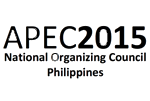
Guidelines
CategoriesThe competition is broken down into two categories. Both categories contain a Strategic Vision and Plan for a Liveable and Resilient City that will begin with an assessment of the existing situation and formulate strategies for disaster risk reduction and preparedness. The Strategic Plan should include spatial, transport, and infrastructure planning, urban design strategies and also involve the community in the process. The city should be attractive for people to live, work, and play; be affordable, accessible, socially acceptable, environmentally friendly and economically viable and climate resilient. The process and the plan should be well documented, including phased development and how the public sector, private sector and the community will work together to make the city more liveable, walkable, and resilient -- ensuring its competitiveness. |
A Government CenterA complex of government buildings which are designed to be disaster-resistant (e.g., able to withstand designated limits of wind velocity, floods, and earthquakes, etc.) and the awareness and education program to make people aware and better prepared for disaster risk reduction. These buildings must be located in a complex that is hazard-free and must be designed to serve the public and pre- and post-disaster phases. They must serve a primary purpose as a public service facility (say, a school or hospital or office building) and a secondary purpose during disasters (say, an evacuation shelter or command post). They must be designed to be the last remaining building in operation, with full back-up power, water, telecommunications, and other capabilities when all other buildings are down. This Government Center may be in contiguous area or may be scattered over different pockets or zones within city limits and accessible to a majority of the city’s population. |
An APEC Meeting VenueA Liveable City plan covering an APEC meeting venue. The site need not cover an entire city but must at least cover an area surrounding an APEC meeting venue (e.g., hotel and convention facility) plus access and routes to other events and functions and to the airport. The plan must include amenities which make attendance at an APEC meeting enjoyable for both delegate and city residents, without causing inconvenience to local residents. It should capture the soul and spirit of a city and be designed to be a permanent fixture of the city, thus creating a core and start of a Liveable City capable of transforming that city into a Lievable City in the ext three to five years. Additionally, the design must encompass disaster-risk reduction principles as well as an effective disaster evacuation plan for those working in that area during an APEC meeting. This category will be open to the 10 cities already selected as APEC venues (e.g., Manila, Tagaytay, Subic, Clark, Boracay, Legazpi, Iloilo, Bacolod, Cebu, and Davao). The designs should be aligned with the city’s strategic vision and plan, especially those that address how they should be attractive for people to live, work, and play. Competition entries should come in the form of visual and conceptual diagrams and illustrations as well as architectural renderings and site plans for the Government Center or APEC Meeting Venue. A preliminary budget and financial and sustainability model must also be submitted. |









